CAMM - Common Anti-Air Modular Missile
Mobile air defense missile system - United Kingdom
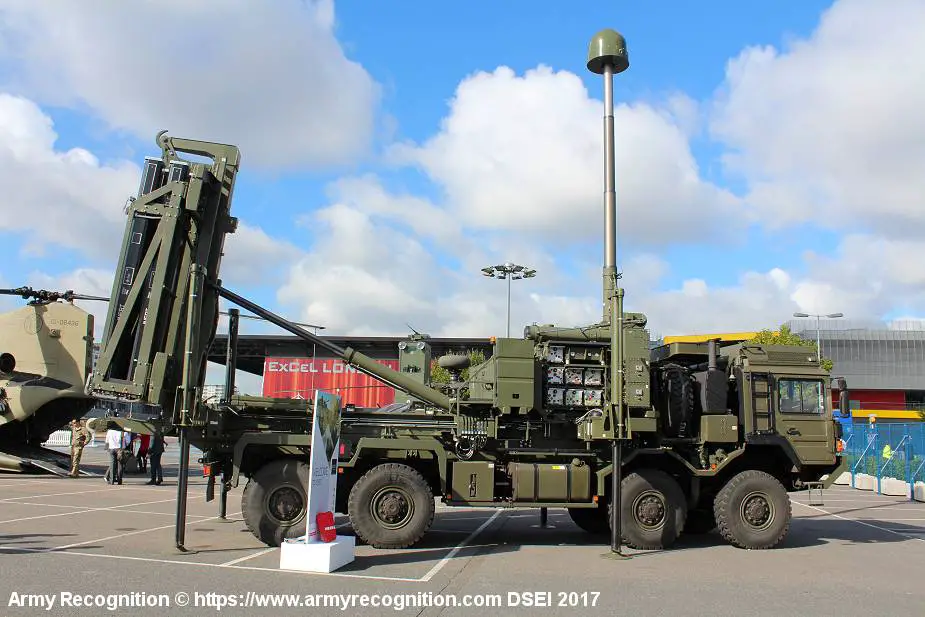
Description
The CAMM (Common Anti-Air Modular Missile) series is a family of surface-to-air and air-to-air missiles developed by MBDA for the United Kingdom. MBDA has developed a common missile that will meet the future anti-air target requirements of Navies, Armies, and Air Forces. Given that the target set, ranging from fast jets and helicopters to cruise missiles and UAVs, is similar across the sea, land and air domains, a weapon solution maximizing modularity and commonality has obvious cost and logistics benefits. The CAMM will provide future land forces with an easily transportable and rapidly deployable local area air defense capability, which can operate as a stand-alone unit or be integrated within a future battle-space network. If 3rd party targeting information is available via the battle-space network, then CAMM is capable of engaging Non-Line of Sight (NLOS) targets. This NLOS feature is particularly attractive for engaging concealed attack helicopters and low-flying terrain-following cruise missiles. The CAMM Land variant was ordered by the United Kingdom to replace the Rapier. The Soft Vertical Launch was proven over a series of trials, culminating in a successful truck launch in May 2011. In May 2014, the British MoD ordered the Land variant of the Future Local Area Air Defence System (FLAADS Land), the CAMM. FLAADS is part of a wider UK 'Complex Weapons' program to deliver a variety of UK industry-based weapons. FLAADS is intended to deliver a common weapons platform (the Common Anti-Air Modular Missile (CAMM)) to equip forces in the air, land, and maritime environments. On September 6, 2022, MBDA announced the delivery to Poland of the first tow launcher vehicles of the CAMM air defense missile system. In June 2023, the Polish armed forces conducted the first firing test with the CAMM air defense missile system.
CAMM Common Anti-Air Modular Missile variants:
- CAMM Sea Ceptor: As part of the Sea Ceptor weapon system, CAMM provides a 360° air defense capability for naval forces out to ranges greater than 25km against the current and future air threat. Requiring no dedicated tracker/illuminator radars, CAMM can be cued by the ship’s own standard surveillance radar to provide high levels of protection against multiple simultaneous targets in the open ocean and littoral environments. It can also be used against surface targets. CAMM launch canisters are compatible with SYLVER and Mk41 family launch silos with CAMM utilizing features such as folding missile fins to maximize launch canister packing density. The introduction of “soft launch” techniques reduces system mass and allows for more flexibility in terms of installation positions on a ship.
- CAMM Air Operations: The same CAMM missile design for Navies and Armies is easily adaptable by MBDA for Air Force use on Fast Jets. MBDA's experience from ASRAAM and Meteor ensures world-class performance will be achieved. MBDA has been working with the MoD on assessing how CAMM technology could be used to sustain or enhance the Royal Air Force's ASRAAM capability in the future.
Technical Data
| Launcher Unit |
|
The launch unit of the CAMM is mounted on a MAN SV HX60 4x4 truck, mounting a crane for self-reloading, and 12 launch tubes for CAMM missiles mounted at the rear of the chassis. In road conditions, the missiles are lowered to the rear part of the truck chassis. In the firing position, two groups of six all-weather canister missile launchers are erected to the rear of the crew cabin.
|
| Missile |
|
The CAMM missile has a minimum operational range of less than 1 km and a maximum range greater than 25 km. It has a weight of 99 kilograms, a length of 3.2 meters, a diameter of 166 millimeters, and reaches a supersonic speed of Mach 3 (or 1,020 meters per second). The Land Ceptor variant of the CAMM missile used in the British Army's air defense system has a range of up to 25 km and can engage targets at altitudes of up to 8 km. The missile is carried in a launcher vehicle, which can carry eight missiles at a time. The launcher vehicle is integrated with a fire control system, which provides target acquisition and engagement capability. In flight, the missile can receive mid-course guidance via a data link before the active homing radar seeker takes over for the final approach to the target. The missile is based on the ASRAAM infra-red air-to-air missile, sharing some common features and components but with updated electronics and an active radar seeker. The CAMM is ejected "cold" from the canister by compressed air and a pistol, which fire the missile 100 ft into the air before its rocket ignites, making integration of the missile easy on all kinds of launching platforms, very differently from missiles such as ASTER, MICA, ESSM, and all others, which are launched "hot", requiring a far more complex canister and launcher vehicle, capable to handle the stress, flames, heat, and exhaust of a hot launch.
|
| Radar and control components |
| Linking the missile system into the Royal Artillery’s evolving Land Environment Air Picture (LEAAP) system which uses the Falcon trunk network, Saab Giraffe radars, and Link 11/16. This might also evolve is the Network Enabled Airspace Defence and Surveillance (NEADS) project ever gets off the ground and will provide a series if incremental improvements over LEAAP. |
| Mobility |
| The CAMM launch unit is mounted on a 4x4 military truck chassis MAN SV HX 60. The truck is motorized with a latest-generation MAN Common Rail small block diesel engine developing 326hp and 1,250Nm torque. The truck-mounted CAMM will have better battlefield mobility. The HX 60 is fitted with a 12-speed ZF AS-Tronic automatic constant mesh gearbox and MAN two-speed transfer box. It provides seating for a driver and two passengers. An Add-on armor kit can be fitted to the cab. There is an observation hatch on the roof that can be used to mount a light machine gun. The truck can run at a maximum road speed of 90 km/h with a maximum cruising range of 800 km. Without preparation the MAN HX60 fords water obstacles up to 1.2 m deep. |
| Combat Operations |
| An interesting feature of the CAMM system in a land environment is that it does not require the radar system to be co-located, opening possibilities for concealing the launch point and attacking non-line-of-sight targets. |
Specifications
| Type | Radar Systems |
| Medium-range surface-to-air missile defense system | Blinfire and Giraffe. |
| Country users | Missile |
| Poland, United Kingdom | Weight: 99 kg Length: 3.2 m Warhead type: Directed fragmentation Flight speed: Mach 3 |
| Designer Country | Range |
| United Kingdom | 1 - 25 km |
| Type of engaged targets | Guidance System |
| CAMM (Common Anti-Air Modular Missile) is designed to engage a wide range of airborne threats, including aircraft, helicopters, unmanned aerial vehicles (UAVs), and cruise missiles. | Active homing radar seeker |
| Crew | Dimensions truck launcher |
| ? | Length: 7.6 m; Width: 2.55 m; Height: 2.89 m |
Details View
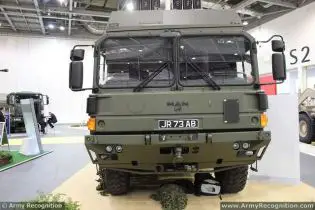 |
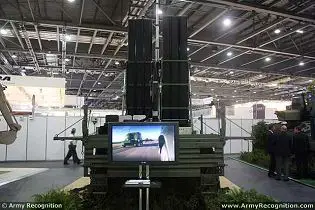 |
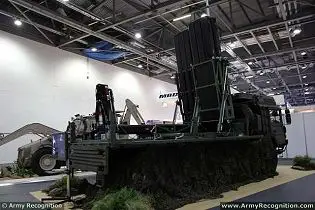 |
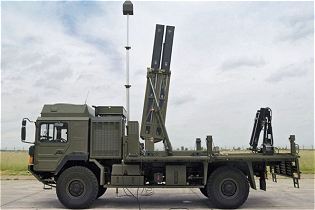 |
Pictures - Video














